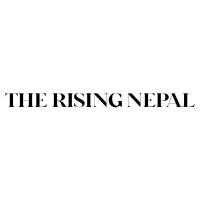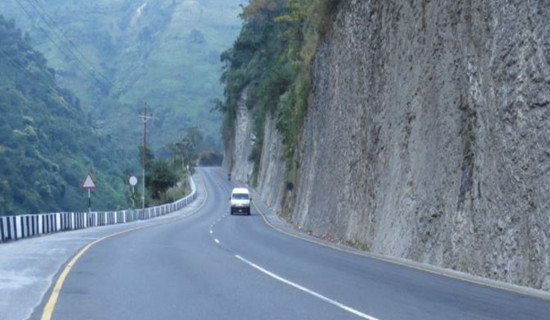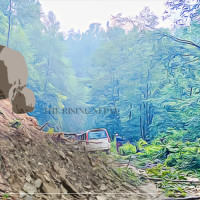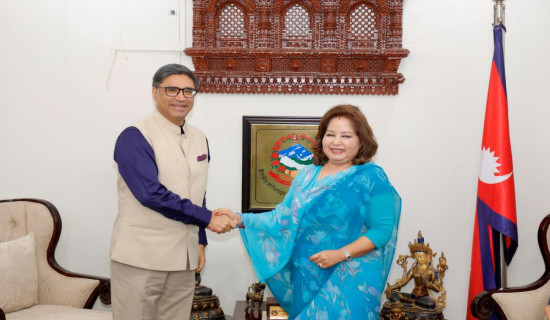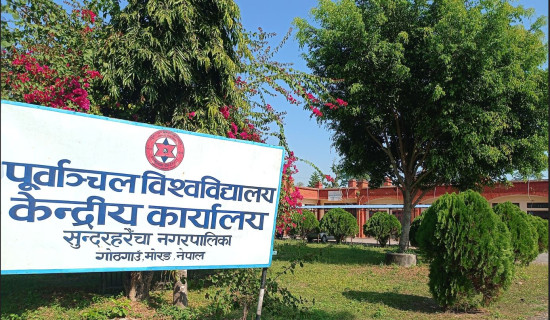- Sunday, 17 August 2025
Bridging Research And Development Gap
On February 25, 2025, I returned to Nepal at the request of Prime Minister KP Sharma Oli. It was inspired by optimism and resolve — to help create a research culture that could make a meaningful contribution to meeting the nation's development challenges. My research desires public innovation and real-world influence beyond academic journal publications.
While in Nepal, I met people from various sectors, including government and private entities, providing a broad view of the country's research landscape. In the first two weeks alone, I discussed with several government officials, including the Director of the Nepal Health Research Council (NHRC) under the Ministry of Health and Population. These conversations gave perspective on national aspirations, ambitions, and the underlying challenges that must be overcome to achieve them.
It was clear from the visit observations and interactions that one of the most significant challenges is the consistent underinvestment in research and development (R&D), despite its crucial role in national development. Research undertakings are directly facilitated by government institutions such as the NHRC and the University Grants Commission (UGC). Yet, they persistently struggle with bureaucratic delays, infrastructure shortages, and limited financing.
Nepal's investment in R&D is low at around 0.3 per cent of its GDP, which is far below the world average compared to countries with advanced scientific output. This limited investment has hindered the nation from realising the objectives most experts view as paramount if the government is to advance in science and technology. Research is primarily based in academic institutions, often motivated by individual faculty interests rather than national priorities.
In contrast, developed countries such as the United States invest nearly 3.5 per cent of their GDP in various research fields, from biotechnology to artificial intelligence. Even an investment of 1 per cent of the nation's GDP — roughly $410 million annually — would be a tipping point for Nepal.
Invested strategically, this would transform the research ecosystem by prioritising fields of R&D that can directly influence the nation's economic growth and overall development.
Besides visits to government institutions, the tour included trips to academic institutions, including Tribhuvan University, the Institute of Medicine, St Xavier's College, and CIST College. These visits provided opportunities to network with the advisor of the National Planning Commission of Nepal, who is now a partner on an ongoing research project on micronutrients. Interactions with professors and students paved the way for enthusiastic minds ready to work, and the discussion was on possible future collaboration on public health activities.
The trip was marked by holding two health camps in Solukhumbu district—April 4 at Solududhkunda Municipality and April 19 at Mapye Dudhkoshi Rural Municipality. The cardiology, optometry, gynaecology, and general medicine health camps provided healthcare services to about 1,700 people. Camp statistics showed that health-seeking behaviours were low among people. During the camp, around 600 individuals were screened for vision issues, nearly 300 needed reading glasses, and a few had never visited an eye care facility in their lifetime. The findings pointed towards a shortage of healthcare services and awareness in rural communities.
Meetings with government officials, from city mayors to the prime minister, provided an insight into how governance, policy frameworks, and political will interface with modern scientific progress. While most leaders were interested in investing in research activities, they were also candid about the nation's financial and logistical constraints. These interactions reaffirmed the importance of policy advocacy in promoting R&D as a national agenda.
It was considerate but difficult to draw parallels between Nepal and the U.S. The U.S. has a massive investment in R&D and is privileged to have an excellent infrastructure—over 4,000 universities, government agencies like the NIH and NSF, foundations, and industry all make up a robust research environment. Scientists there have access to first-rate facilities, plenty of funds, and global podiums to share results.
Nepal's context is very different. Most rural health centres lack basic equipment, and primary data collection continues to be paper-based, rendering large-scale analysis complex. Nonetheless, there is power in community involvement, cultural coherence, and a youthful population firmly committed to national development. Past success in climate change research, agriculture, and education illustrates capacity for expansion, particularly via international collaboration involving Tribhuvan University, Kathmandu University, and Purbanchal University. Nepal's geographical and cultural diversity presents unmatched opportunities for environmental, social science, and epidemiological studies. The ever-present challenge is the absence of an integrated national policy connecting research priorities to development goals, besides the issue of financing, training, and maintaining a qualified workforce.
Conversations with young people elicited enormous frustration rooted in personal challenge and disillusionment with leadership. Lack of visible progress, little job security, and delayed infrastructure development encouraged this. The majority considered or had already chosen prospects external to the nation, resulting in a mass flight of youth. Economic weakness and hopelessness of systems change seriously threaten the nation's future.
Nepal should adopt a multilateral policy driven by sustainability. A commitment fund for federal R&D with national priorities, institutional strengthening through capacity building at the university level, and evidence-based research policies are important launch pads. This trip to Nepal highlighted governmental and policy shortcomings while inspiring optimism for constructive transformation through collaborative endeavours.
(The author is a health researcher.)


